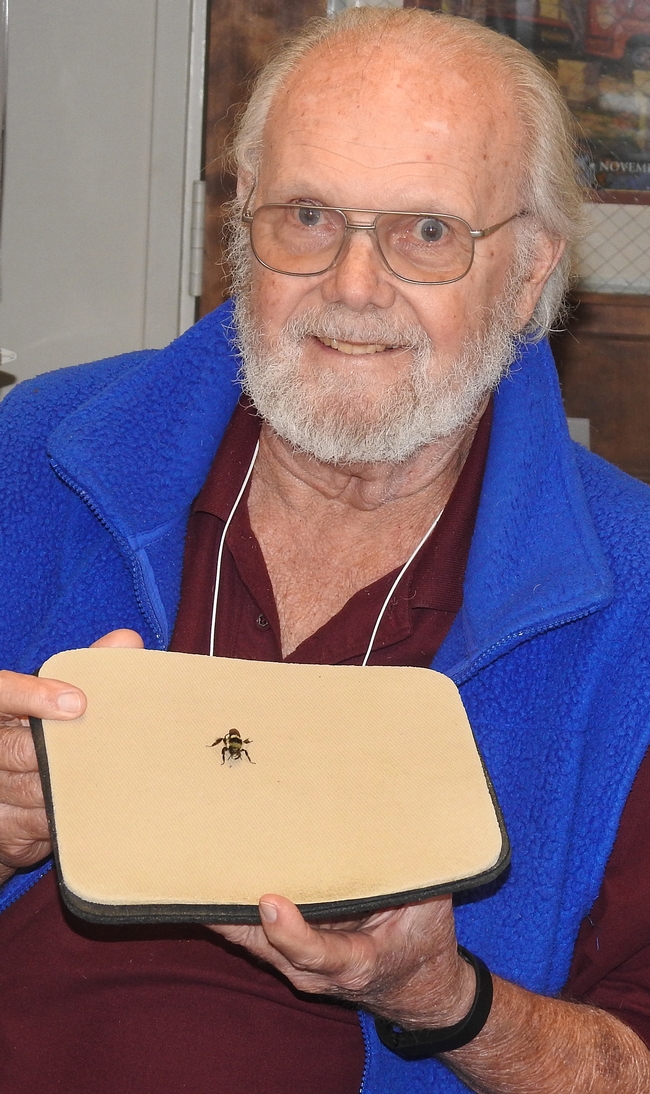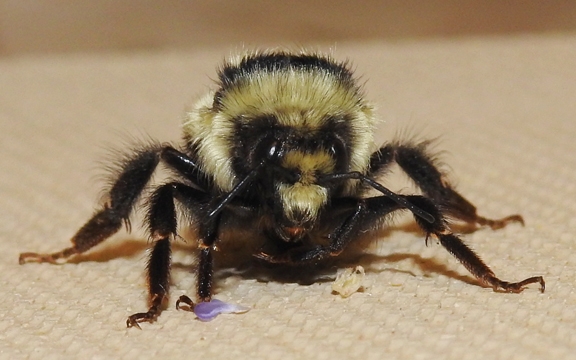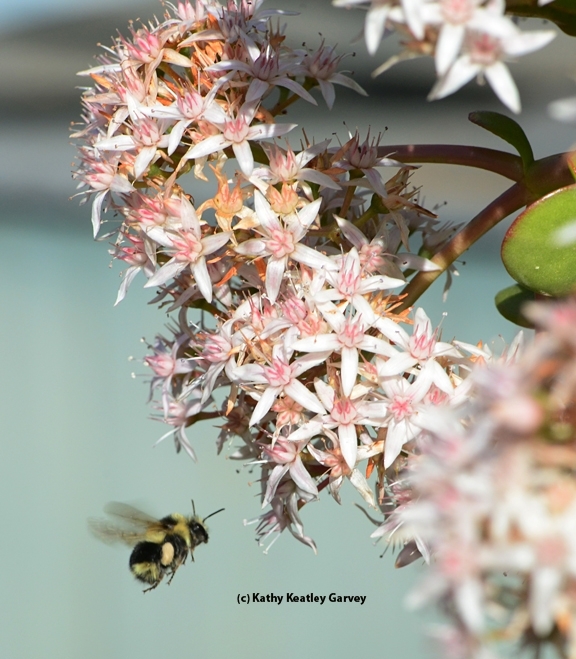
Native pollinator specialist Robbin Thorp, distinguished emeritus professor of entomology at UC Davis, greeted a visitor on Feb. 14 in his office in the Harry H. Laidlaw Jr. Honey Bee Research Facility.
This visitor didn't talk, though. She buzzed.
And she buzzed right over to his window.
Well, hello, black-tailed bumble bee, Bombus melanopygus!
"Guess all one needs to do is sit and wait," he wrote in an email to bumble bee enthusiasts. "Eventually a gyne will find her way into one's office. This one was buzzing against my window just a few minutes ago trying to get back outside."
She came to the right place.
Thorp, a noted expert on bumble bees, is the co-author of Bumble Bees of North America: An Identification Guide (Princeton University) and California Bees and Blooms: A Guide for Gardeners and Naturalist (Heyday). He also teaches at The Bee Course, an annual workshop hosted by the American Museum of Natural History at the Southwestern Research Station, Portal, Ariz. (The Bee Course is meant for "conservation biologists, pollination ecologists and other biologists who want to gain greater knowledge of the systematics and biology of bees," according to the website. This year's course is Aug. 21-31.)
The black-tailed bumble bee, native to North America, is one of only 250 species worldwide in the genus Bombus.
What's next with Thorp's bumble bee?
A nest box in an almond tree near the Laidlaw facility--feed her some honey, make her feel at home, "then let her fly out, hopefully to return and establish a nest."
Insect photographer and naturalist Allan Jones of Davis discovered and photographed three Bombus melanopygus foraging on manzanita on Jan. 27 in the UC Davis Arboretum. In doing so, he won the science-based, friendly competition among a small group of bumble bee enthusiasts in Yolo and Solano counties searching for the first bumble bee of the year.
But Allan Jones went looking for his bumble bee; Thorp's bumble bee came to him...
Attached Images:

A black-tailed bumble bee, Bombus melanopygus, peers at the photographer. This one buzzed into Robbin Thorp's office at UC Davis on Valentine's Day, Feb. 14. (Photo by Kathy Keatley Garvey)

A black-tailed bumble bee heading for jade blossoms in the Benicia (Calif.) Capitol State Historic Park, Solano County, on Christmas Day, 2013. (Photo by Kathy Keatley Garvey)